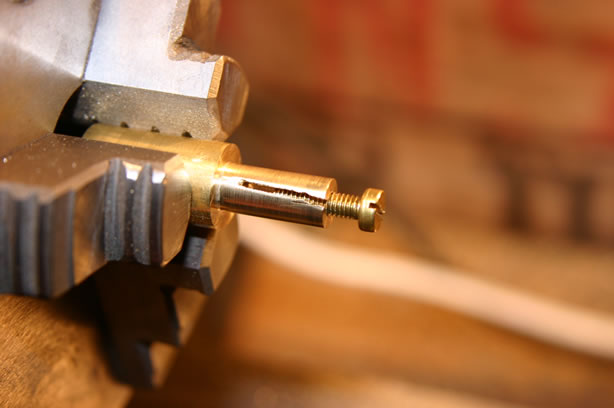I have a question about putting small parts in the 3-jaw chuck. For instance, I am trying to make a flywheel which is 1.25" diameter, 0.44" thick. (For now it is just a disc of metal, the rest of the work will be done on the mill.)
I do fine turning the OD and facing off one side, then part off the flywheel from the bar stock. Now, I want to flip the part around and face the other side and bring the thickness to size. I can't seem to get the part chucked in such a manner that the axis of the flywheel is exactly coaxial with the axis of the spindle. It seems the part is a bit crooked. So, after I face the other side and mount the flywheel on a shaft and spin it at high speed, it has a 'runout'. (If you looked at the flywheel from the side view, the sides seem to wobble instead of being straight up and down.) I hope what I'm saying is making sense.
Anyway, is there any trick to chucking up a part this thin and keeping it coaxial with the machine spindle?
I do fine turning the OD and facing off one side, then part off the flywheel from the bar stock. Now, I want to flip the part around and face the other side and bring the thickness to size. I can't seem to get the part chucked in such a manner that the axis of the flywheel is exactly coaxial with the axis of the spindle. It seems the part is a bit crooked. So, after I face the other side and mount the flywheel on a shaft and spin it at high speed, it has a 'runout'. (If you looked at the flywheel from the side view, the sides seem to wobble instead of being straight up and down.) I hope what I'm saying is making sense.
Anyway, is there any trick to chucking up a part this thin and keeping it coaxial with the machine spindle?





